24 Hours in Jaipur: A Guide For Culture Lovers
India’s first planned city, Jaipur is a delightful spot. Although you could easily spend a few days here, it’s also possible for travellers with limited time to get a feel for the Pink City.
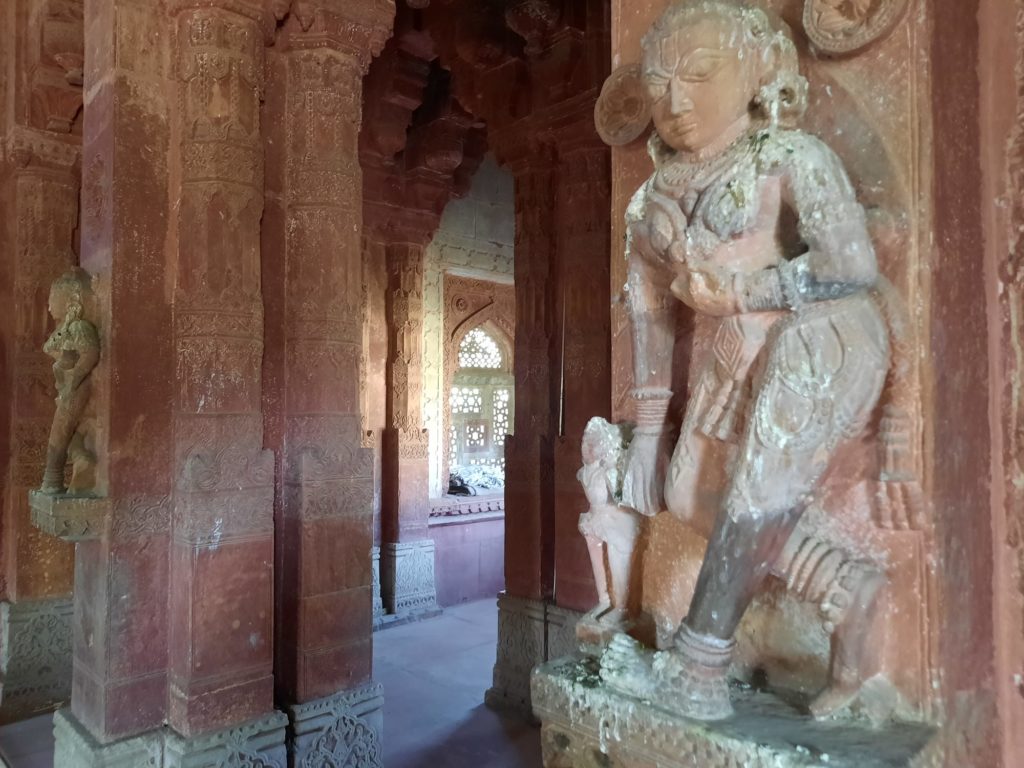
A Short Visit To Jaipur
During my recent visit to India, I first visited Hyderabad and Bengaluru (from which you may deduce the industry I work in), before taking a couple of days to explore on my own time. My travel buddy and I decided to travel to Rajasthan, and make Jaipur our base for a couple of days. We used one day for a daytrip to Agra and spent another relaxing, which really only left 24 hours in Jaipur. A private tour helped us to maximise this time and learn as much as we could about the largest city in Rajasthan.
Jaipur was built in the 18th Century by Sawai Jai Singh II, who named the city after himself. Jai Singh had a great interest in mathematics, astronomy and architecture, which we will learn more about later. He inherited a much diminished throne at his accession, but rebuilt his power as a formidable ruler who tapped into ancient ceremonies to also build his prestige. Jai Singh moved his capital from Amber, 11 KM away, due to a growing population and dwindling water supply. He founded Jaipur in 1727 and made it a planned city, based on ancient Hindu architectural principles. There are also visible influences from Mughal architecture.
Jaipur is known as the Pink City for a peculiar historic reason. In 1876 when Albert Edward, then Prince of Wales, visited, Sawai Ram Singh II ordered the city to be painted pink to resemble local sandstone. The distinctive colour remains today: building owners in the Old Town are required to maintain the pink hue. A gateway to the rest of Rajasthan, Jaipur has many points of interest in its own right. The city has several palaces, an observatory, and forts, while its position nestled in hills of the Aravalli range is striking. Jaipur has a hot, semi-arid climate and monsoon rains in July and August.


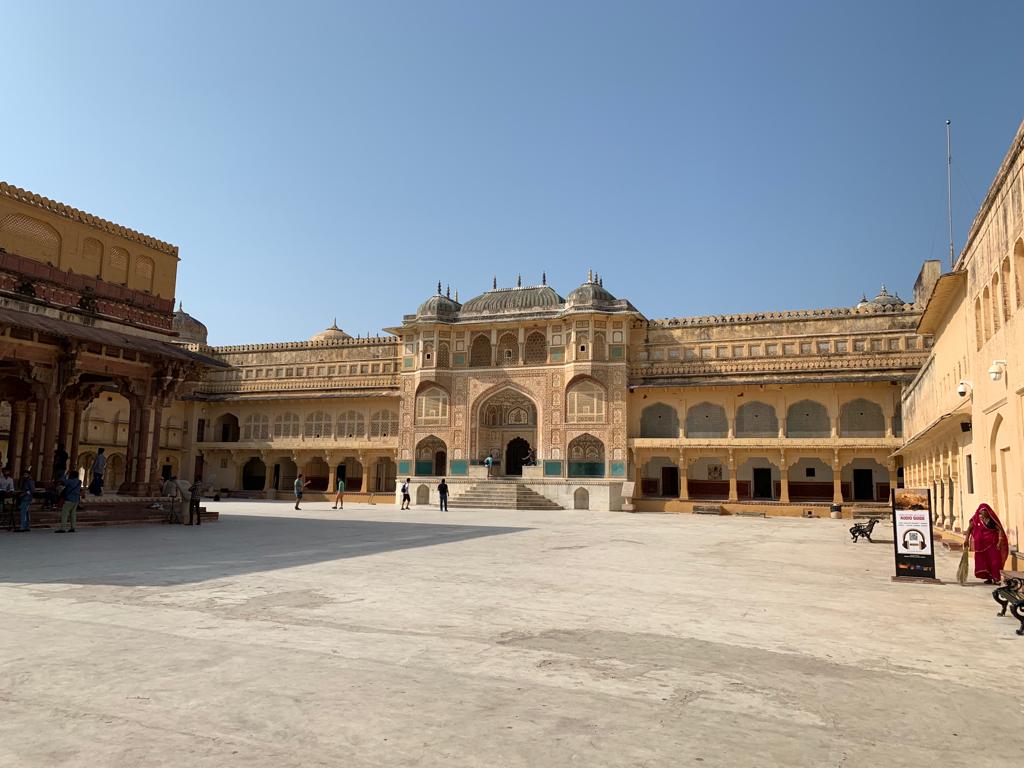
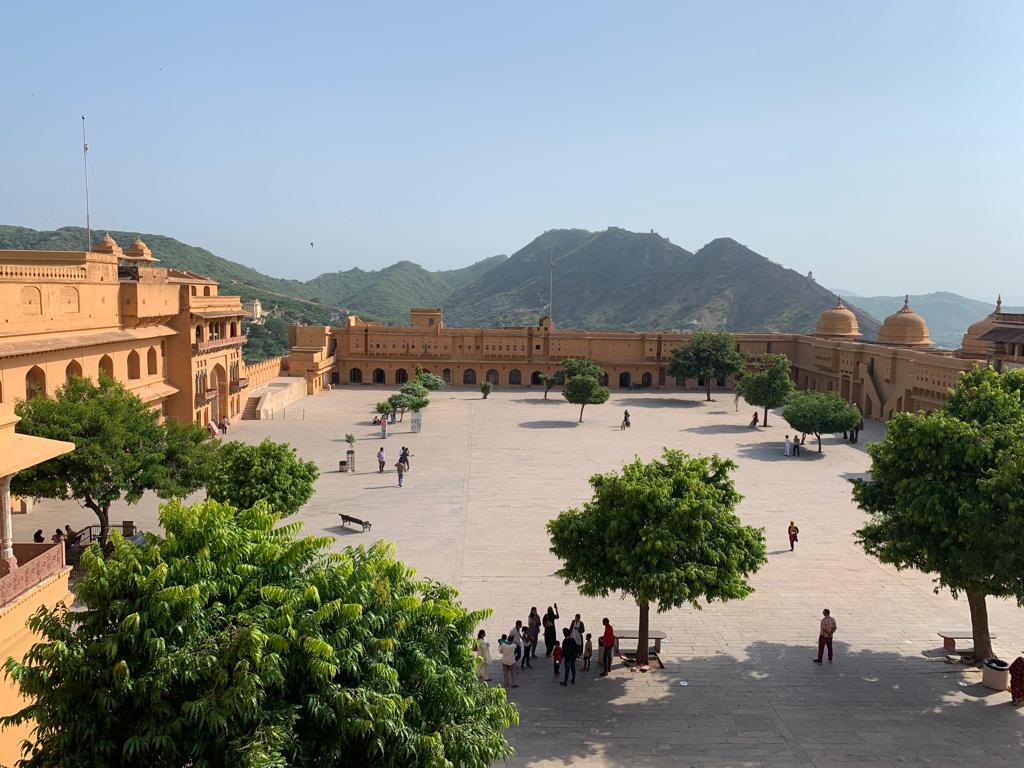
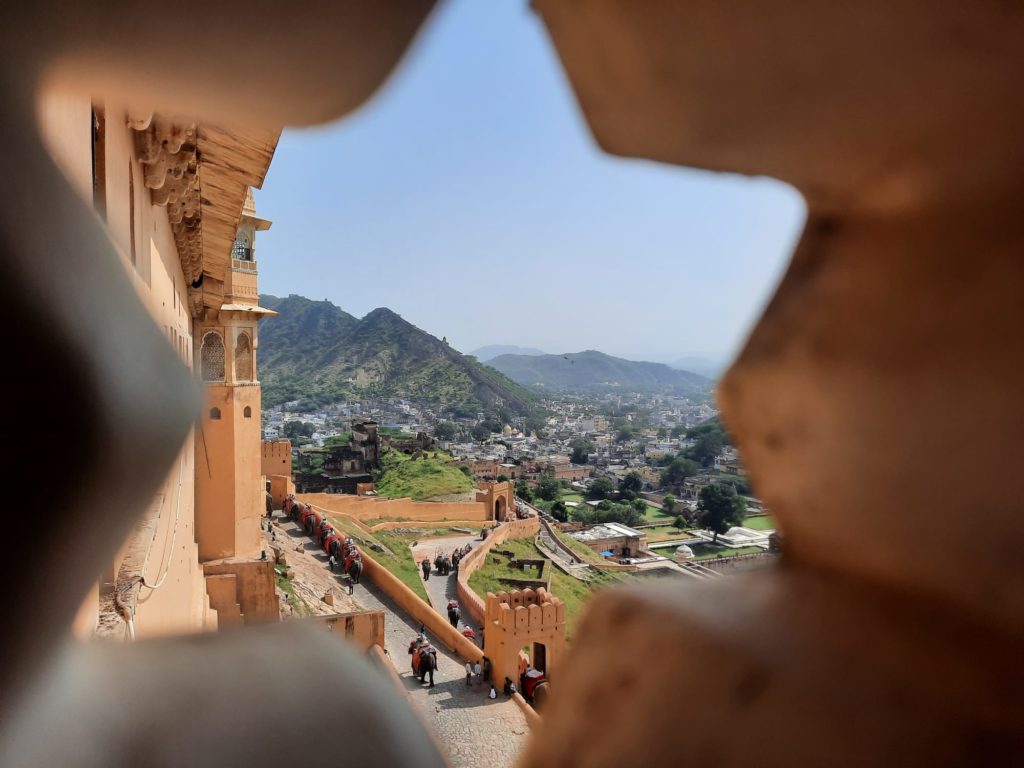

Amber Fort / Amer Fort
We started our day in Jaipur very early to avoid the heat. We also began not quite in Jaipur itself but in Amber a few kilometres away. Amber and its fort are also known as Amer. While on the subject of names, it’s also important to note that a fort in India may not be what you’re thinking of. We tend to use the word fort to describe purely defensive edifices, whereas Indian forts are closer to citadels: fortified and defensible cities. Amber Fort has forbidding walls, but also beautiful palaces within.
Much of today’s Amber Fort was built around the start of the 17th Century by Raja Man Singh I, a member of the Mughal Emperor Akbar’s court. It was he who built perhaps its loveliest feature, the Sheesh Mahal, or Mirror Palace. Bad tourist behaviour means you can no longer go inside, but you can admire the intricate patterns made with fragments of mirrored glass. The fort takes some visiting if you want to see every part of it. There are baths, stone window screens, somewhat more neglected bits that smell of bats, and spectacular views all around. Well worth a visit.
A note on elephants. Approaching Amber Fort, you will definitely see either signs about elephant rides, or the elephants themselves. But carrying tourists up steep stone paths all day in the heat is not an ideal situation for an elephant. Everyone will make up their own mind, but I would not be comfortable doing an elephant ride. Even many nearby ‘sanctuaries’ offer rides and other interactive elephant experiences. If you want to see more of these lovely animals, please at least do your research and choose a place whose ethics you’re comfortable with.

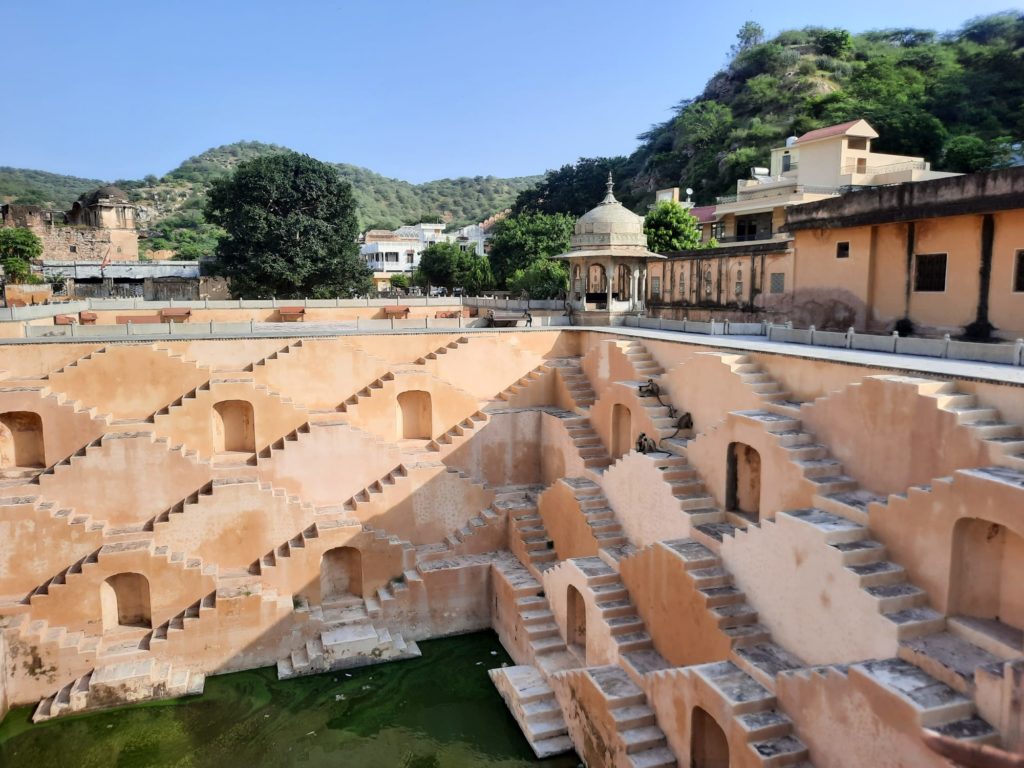
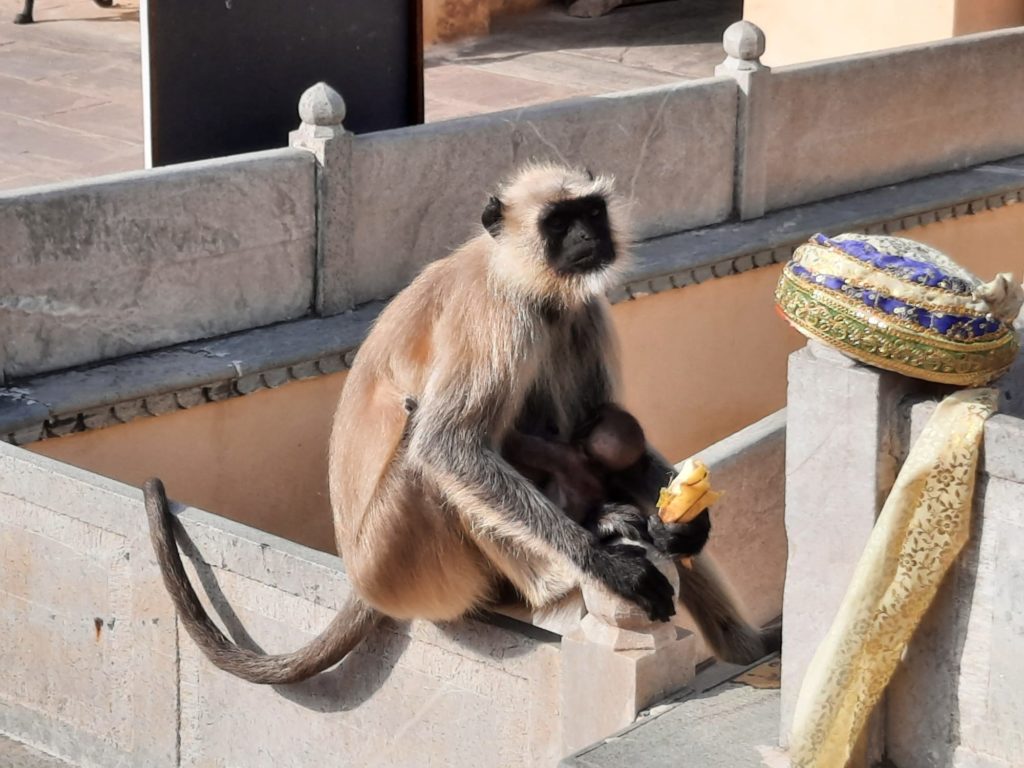
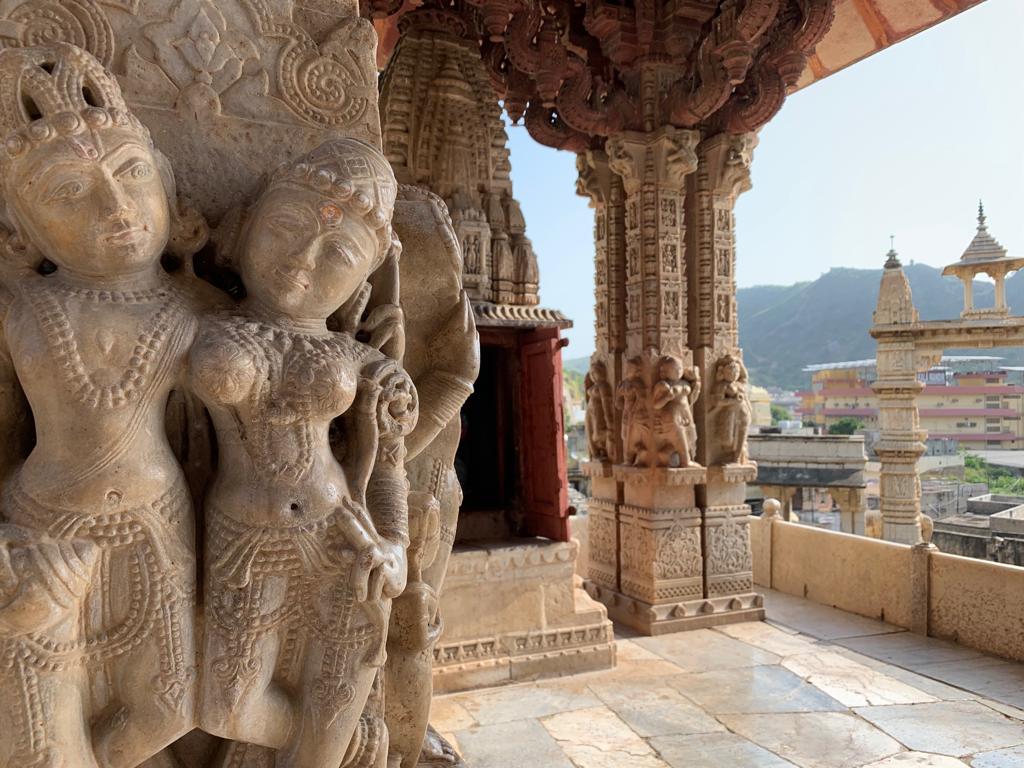
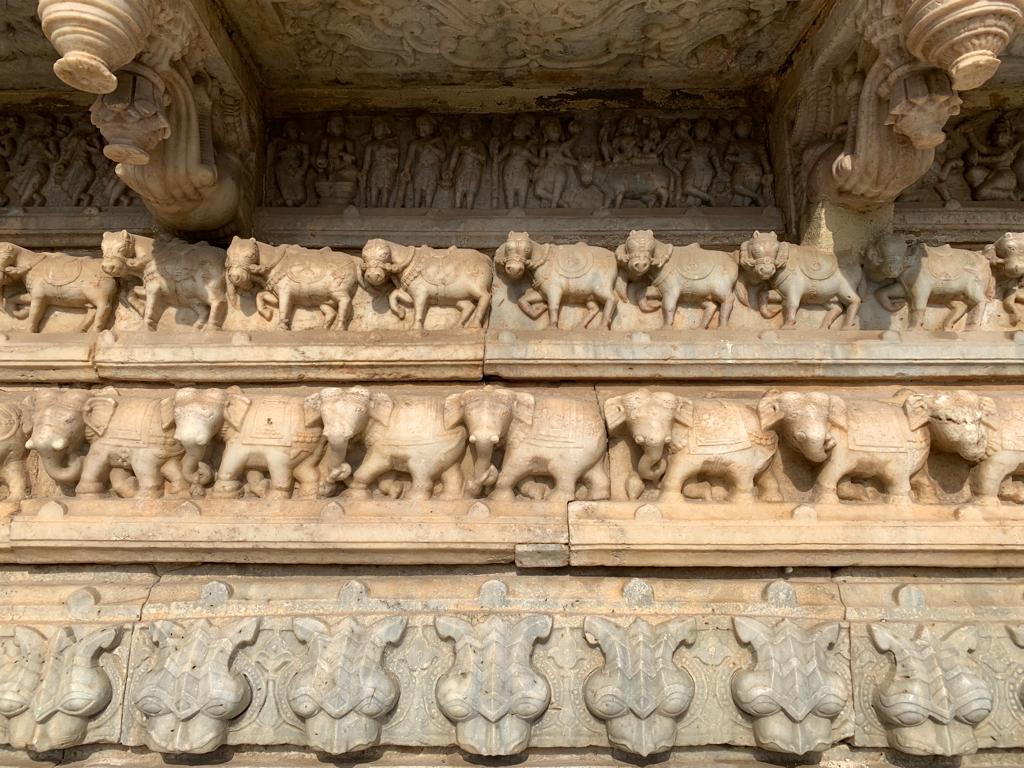

Around Amber Fort
We actually visited these spots before heading up to Amber Fort, but I wanted to orient you first! As Jaipur’s predecessor, there are many historic and interesting places to see in Amber/Amer in and around the fort. Again early morning is a perfect time to visit. It had been an ambition of mine to visit a stepwell ever since I found out they existed, and Panna Meena Ka Kund is a lovely example. Stepwells are a solution to varying water levels throughout the year. They have steps descending down so the water is reachable whether it’s high or low. Often step wells have beautiful geometric patterns. Having the place to ourselves apart from monkeys running around the steps and a couple of vendors setting up was a special experience. There are around 100 stepwells in Rajasthan and around 2,000 across India.
We then went to the nearby Shri Jagat Shiromani Ji Temple. Dedicated to Krishna, Vishnu and 16th Century female mystic Meera or Mirabai, the temple was built between 1599 and 1608 by Kanakwati, wife of Man Singh I. The stone sculptures are stunning, as are the views out over the town. Mirabai was devoted to Krishna, and the statue of the god inside the temple is said to be the very one she worshipped. Although I’ve also read that the temple was built about a century later by Jai Singh II himself in honour of a local ascetic. Perhaps take all histories with a pinch of salt. It’s very much an active place of worship today, which as a visitor means removing shoes, showing respect, and being mindful of the pictures you take.


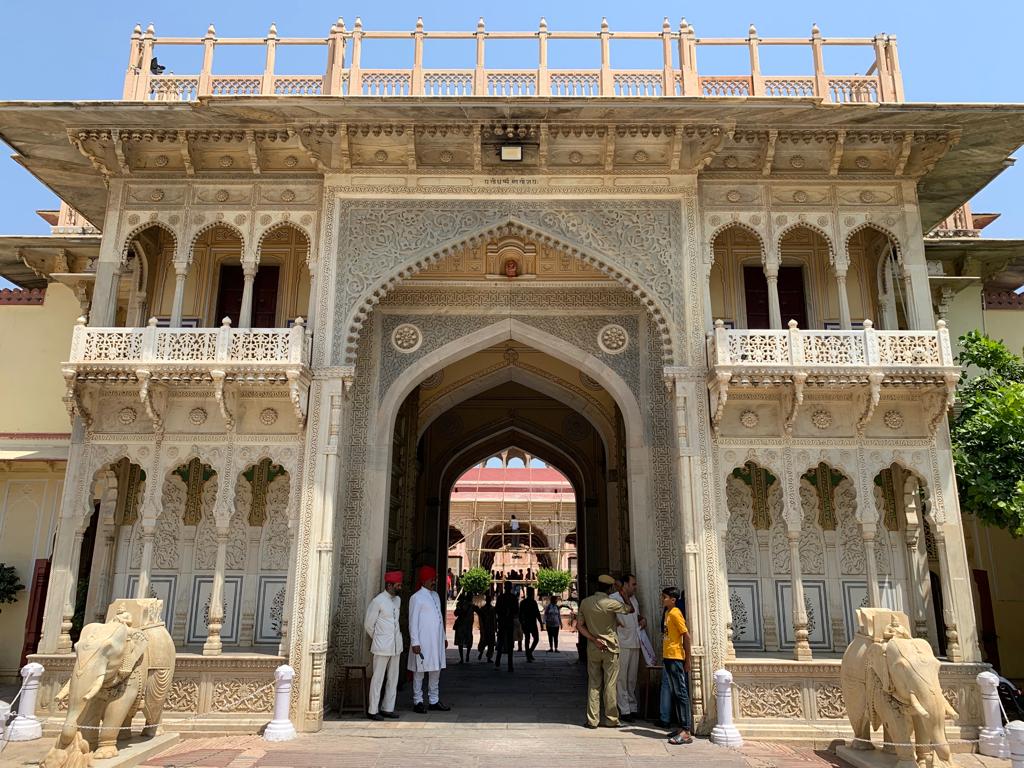
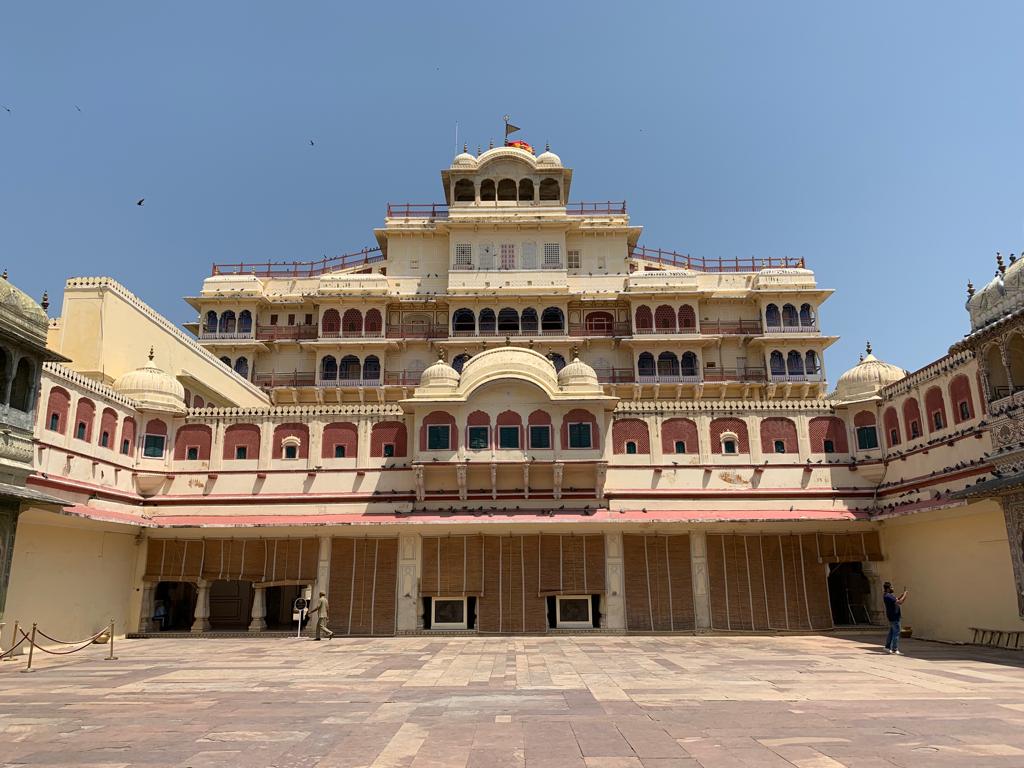
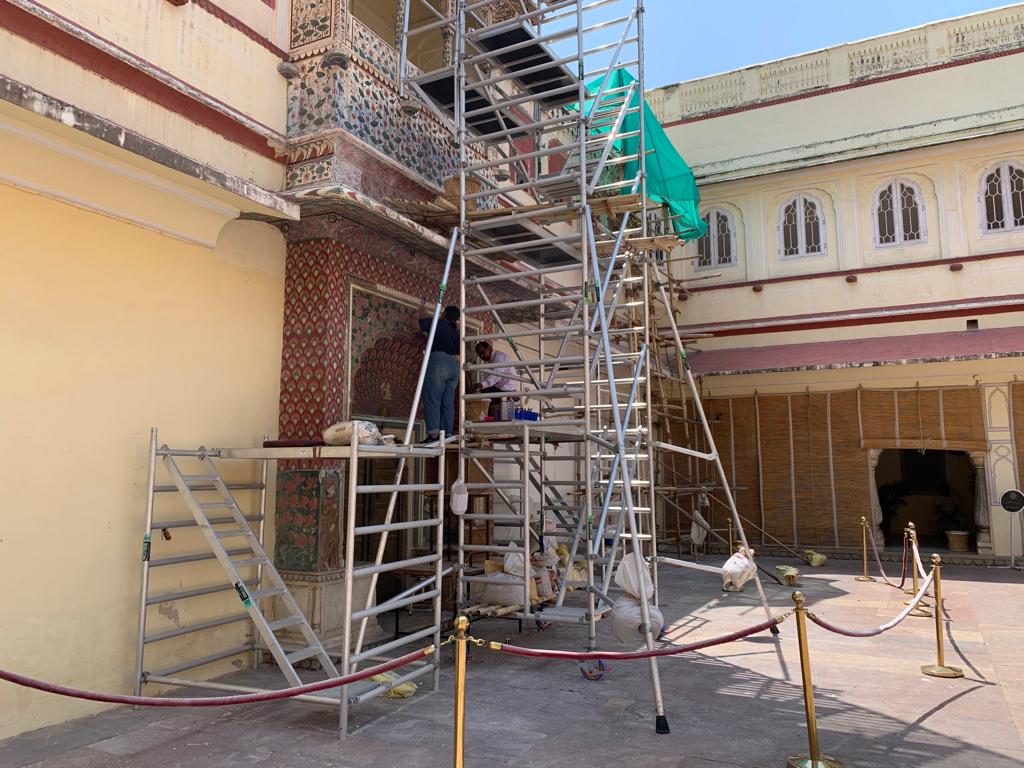
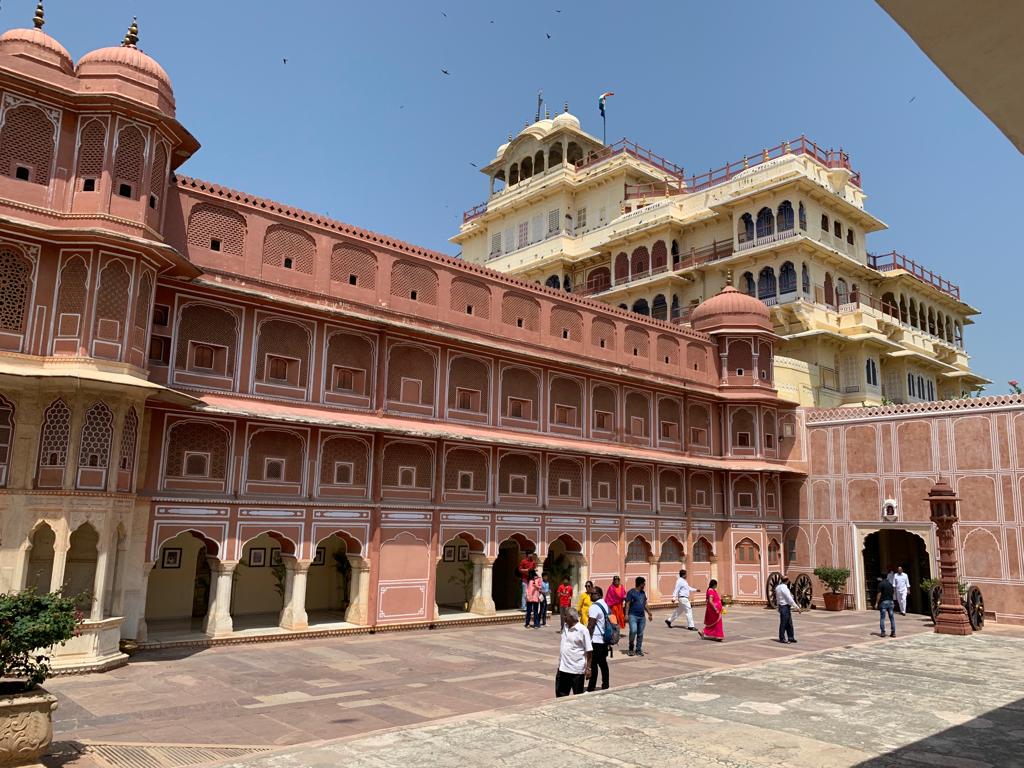
City Palace
We’ve now left Amber for Jaipur itself. Following Amber Fort we were given a choice on our tour: head to Jaigarh Fort (ticket included) or see City Palace (extra). We chose the latter, our reasoning being that it was getting hot by this time, and also that we wanted to see something different. Going to City Palace also took us properly into the Old Town to have a look around.
Jaipur’s City Palace is a former administrative headquarters and current residence of Jaipur’s ruling family. Sawai Jai Singh II had it built, with construction completed in 1732. It’s an example of ancient Indian architectural principles, and a blend of Mughal and Rajput influences.
Because it’s still a royal residence, there’s a lot you can’t visit. But there are still enough points of interest to make it a worthwhile stop for an hour or so. There are a couple of museums (no photos inside) about the royal family, textiles, and arms and armour. The Hall of Audience, where you can see objects related to past rulers and their guests, is well worth seeing. Also interesting are the various guards and keepers in different uniforms: many are servants of the royal family. Only take a picture with them if you’re willing to pay a tip.
Frankly Amber Fort is much more beautiful as palaces go. But it’s interesting to see a working royal residence. Your guide will likely show you a music video or two shot in the out-of-bounds private rooms. And the museums are passably interesting. All in all I could have given City Palace a miss, but am still glad I didn’t go for another fort in the late morning sun.
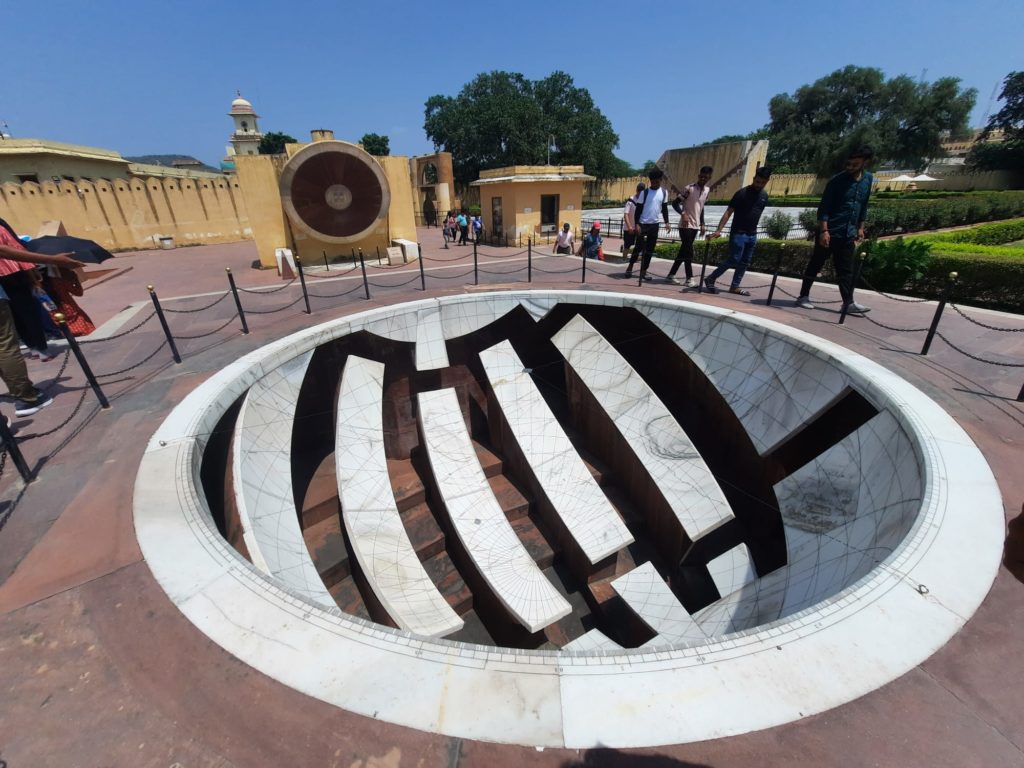
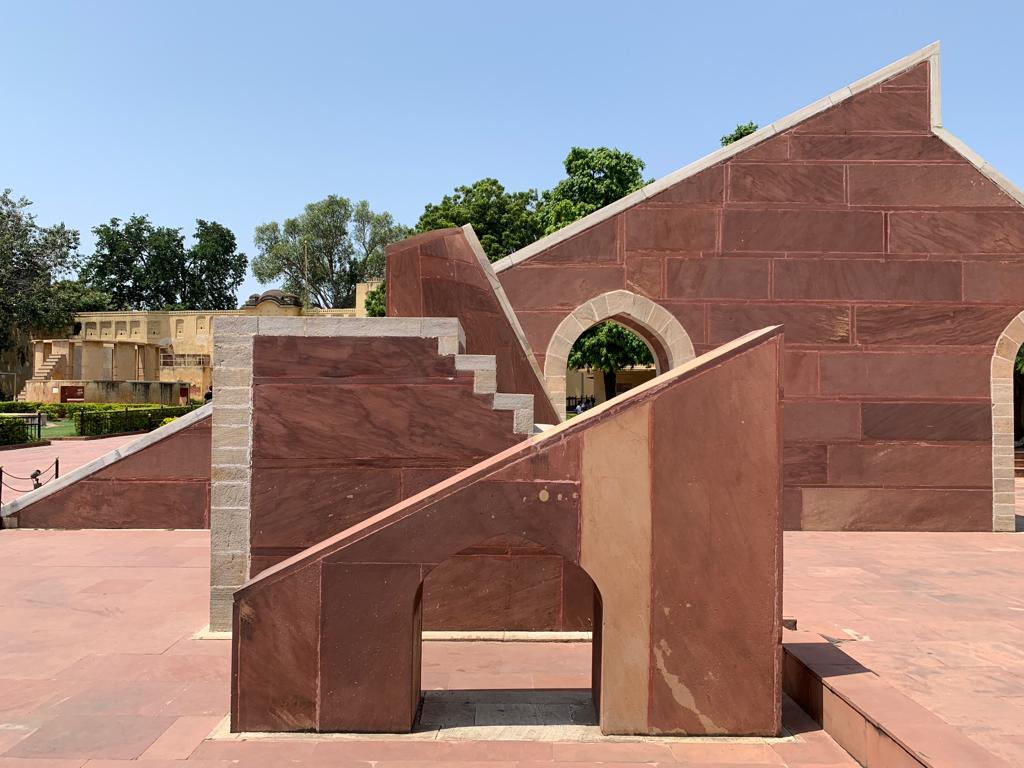
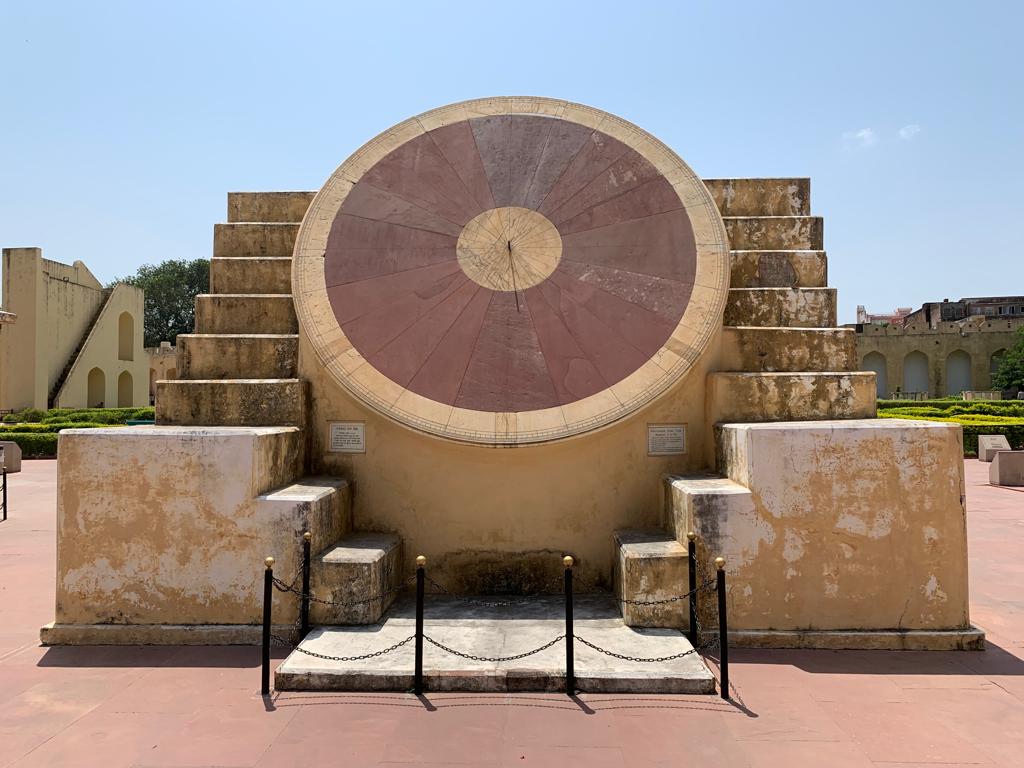
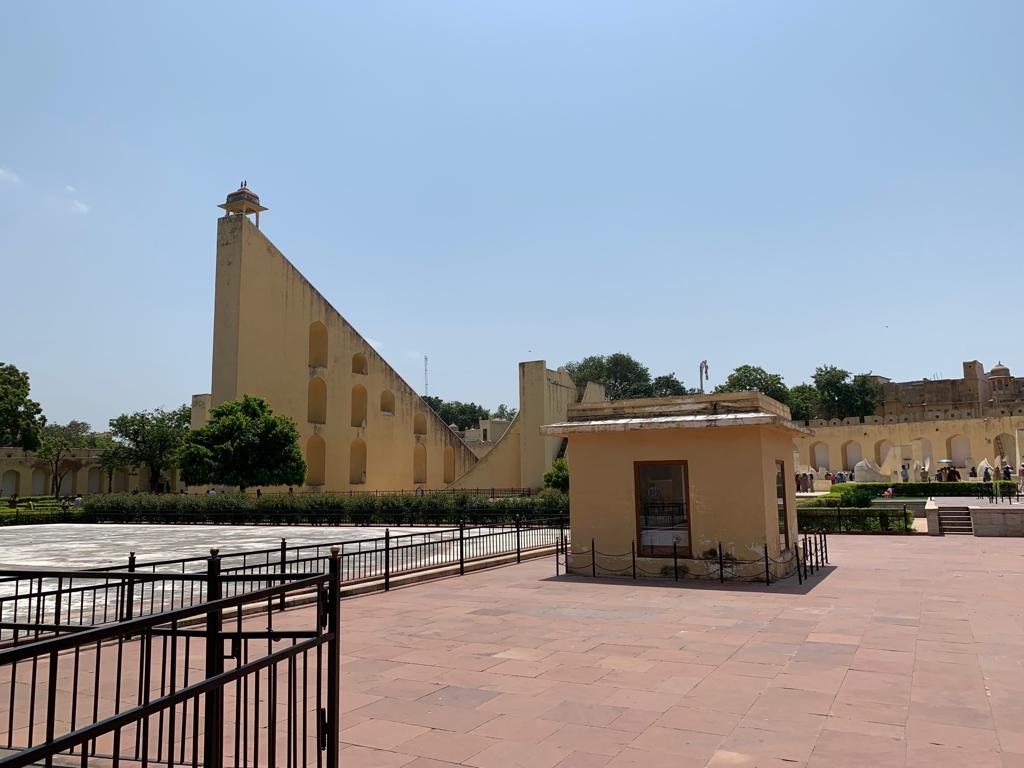


Jantar Mantar
Probably the best thing about having gone to City Palace is it meant we could make another unscheduled stop at Jantar Mantar. This royal astronomical observatory, also the work of Sawai Jai Singh II, is just next door. It was roasting by this time so we rushed it a bit, but I had read about Jantar Mantar in advance and found it intriguing.
Astronomy remains important in Indian culture today, factoring into personal fortunes and life decisions. In Jai Singh’s time it was even more critical: used to calculate dates for important events among other things. But it was hard to calculate these dates accurately. Jai Singh decided better astronomical skills and training were needed, and built observatories in five locations, including Jaipur and Delhi. ‘Jantar Mantar’ translates as ‘calculating instrument’. Construction continued on the 19 astronomical instruments until 1738, and at its peak more than 20 astronomers worked here.
Aside from the sheer beauty of Amber Fort in the early morning, Jantar Mantar was my favourite sight in Jaipur. It’s unique amongst all the places I’ve ever been. And the angular instruments look so much like modernist design. Le Corbusier’s designs for Chandigarh came to mind. Our guide told us the functions of all the instruments (a lot of sundials amongst other things) before we got a well-deserved cold drink.

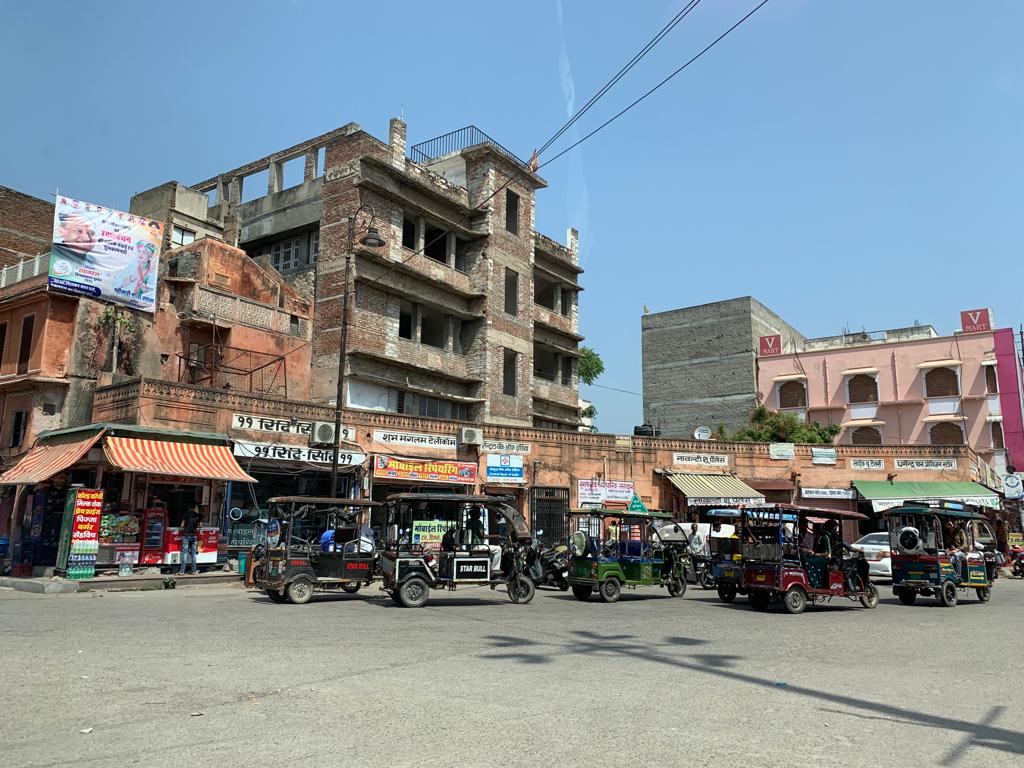
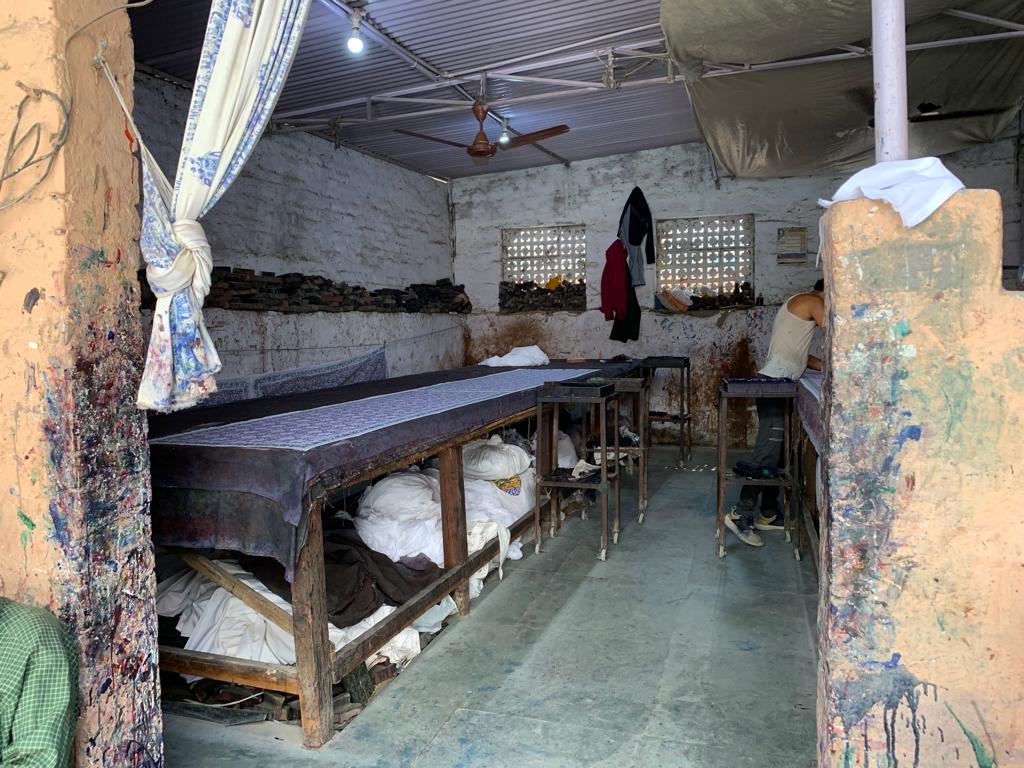

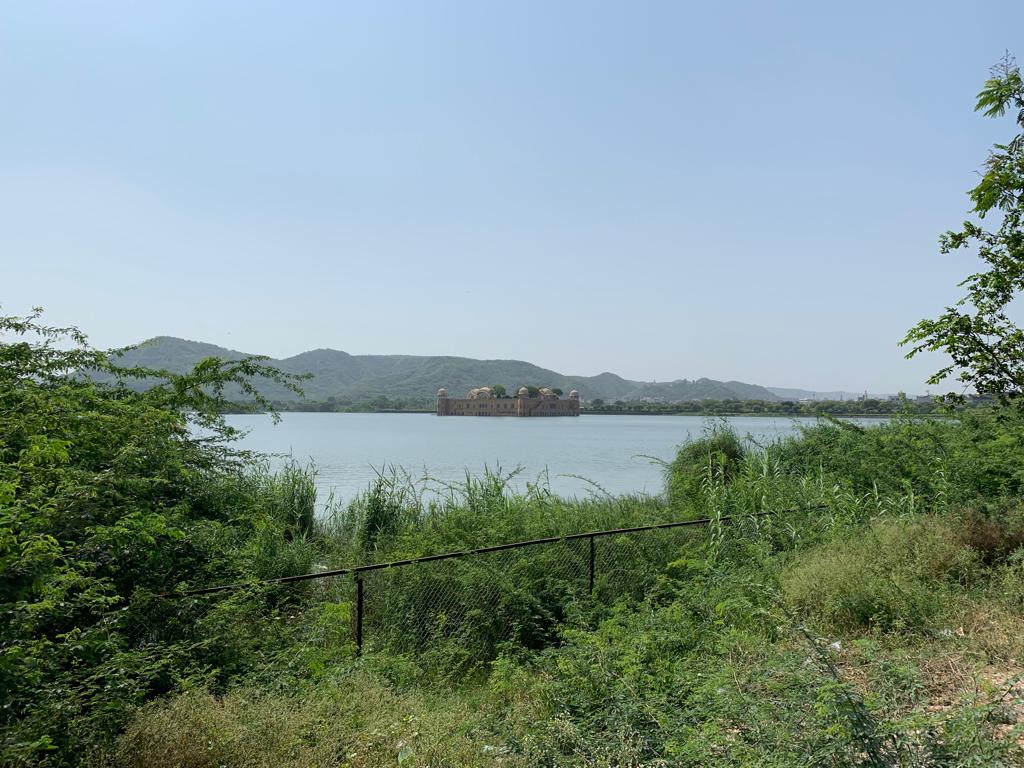

Other Jaipur Sights
Like I said somewhere near the beginning, 24 hours in Jaipur is not long enough. There’s plenty more you could see and do. Below are a few suggestions with links for more information.
- Maota Lake and Amber Fort Sound and Light Show: last image above. Originally a rainwater catchment for Amber Fort, today it’s a great place to get a view up to it. In the evenings you can see the Amber Fort Sound and Light Show: I didn’t have the opportunity on this trip, but from previous experience seeing a sound and light show (in Hindi no less) at the Port Blair Cellular Jail, it’s good fun and quite impressive. Get tickets here.
- Jaigarh Fort or Nahagarh Fort: Jaigharh Fort is about 1KM uphill from Amber Fort. It boasts the world’s largest cannon, which apparently sent a cannonball 35KM on its only firing. It has scenic gardens and spectacular views. Nahagarh Fort also overlooks Jaipur from the Aravalli Hills. Probably best kept for longer stays in the city.
- Hawa Mahal (Wind Palace): top image above. Dating to 1799, the purpose of this palace was to allow royal women to watch city life unobserved. The narrow, five storey structure is striking and photogenic.
- Jal Mahal (Water Palace): fifth image above. A Rajput-style palace in the middle of Man Sagar Lake. You can’t visit the palace but can look at it from the lake (not recommended) or the shore (recommended).
- Galwh Bagh (The Monkey Temple) and Suriya Mandir (The Sun Temple): the monkeys here are apparently quite tame, and the sunsets lovely.
- Block Printing: workshop third image above. Block-printed fabrics from Jaipur are famous. If you do an organised tour, it’s likely you’ll be taken to a workshop where your guide gets a kickback from your purchases. If you’re firm yet polite though, you can get through with your wallet unscathed. A better option might be the Anokhi Museum of Hand Printing. I would definitely check this out if I go back to Jaipur in future.

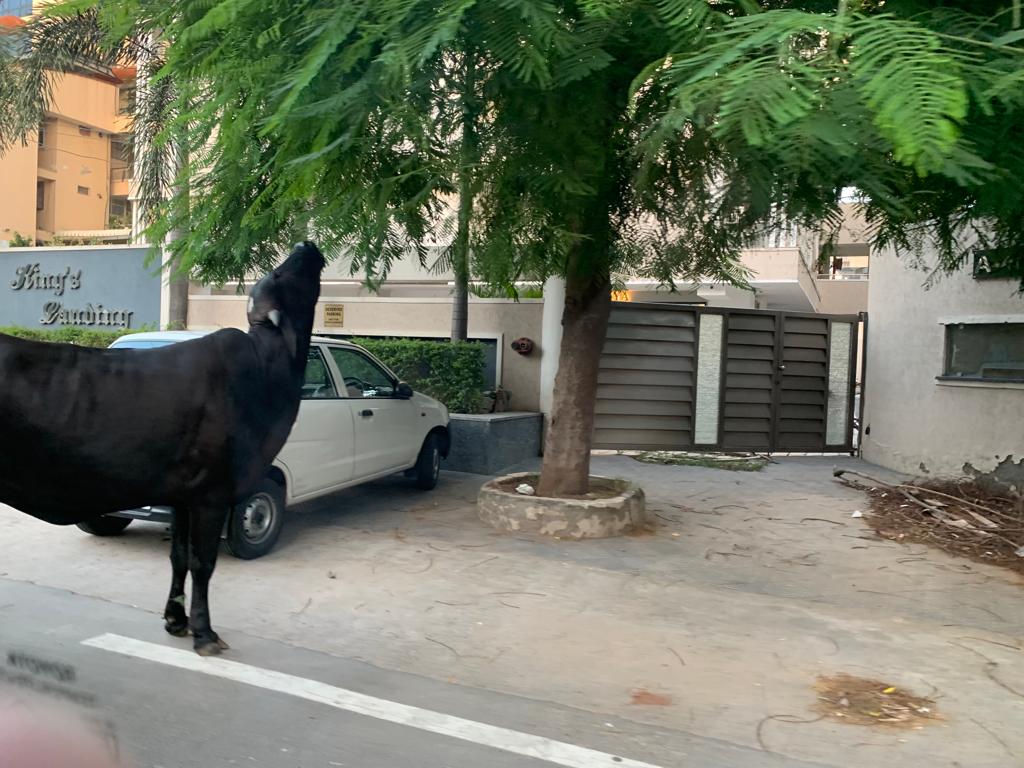


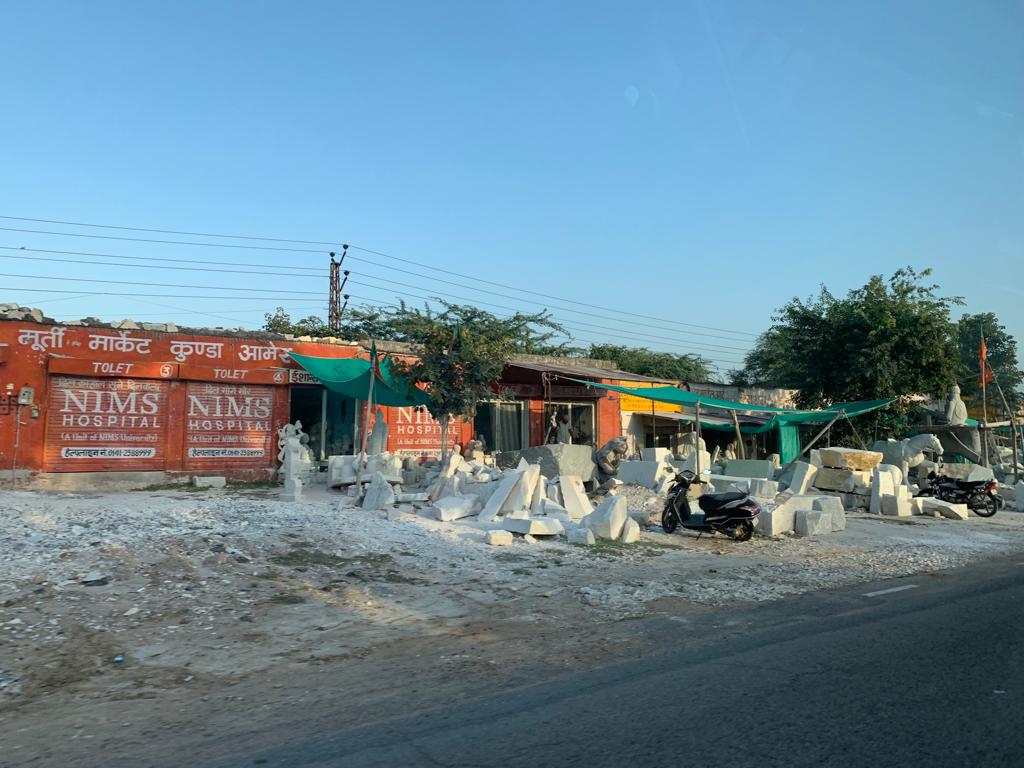
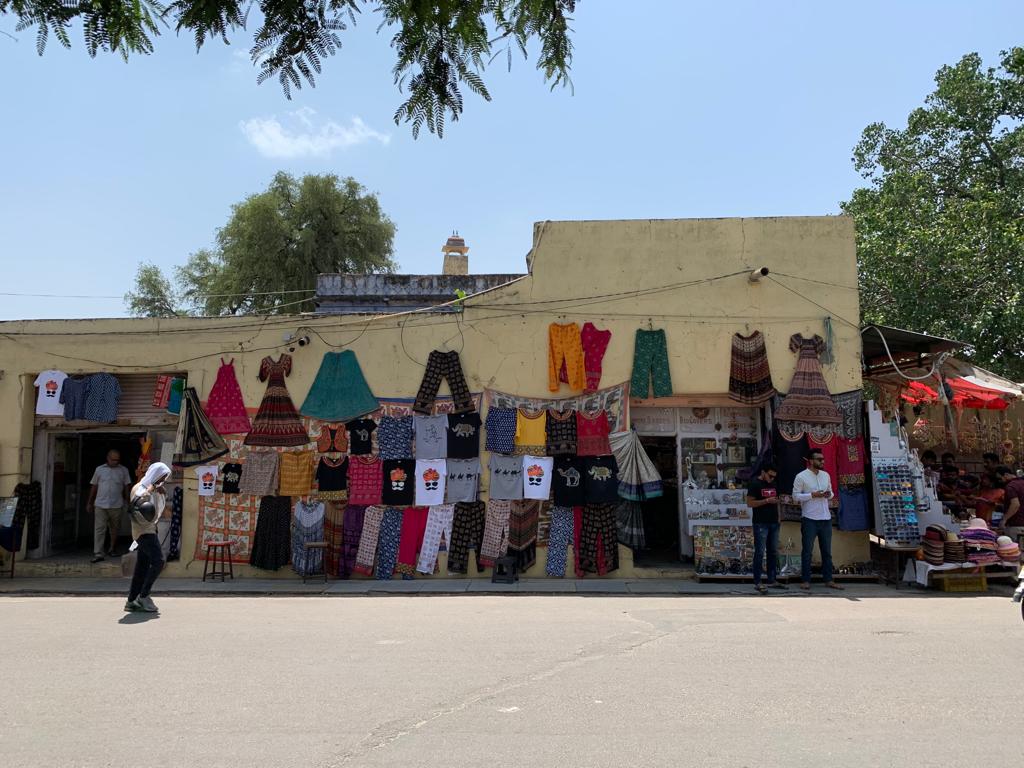
In Conclusion: Jaipur In 24 Hours
Jaipur is a lovely place. I think about three days would allow you to do most of what you want. Or if you use it as a base for the surrounding area, you could spread activities out over a few sunrises and sunsets. But at a pinch, 24 hours will allow you to hit a few highlights, and ideally plan for what you might see on a second trip. A few dos and don’ts now to finish with.
Do
- Get a guide. Joining a guided tour or having a private guide allows you to maximise precious time. It also takes the hassle out – you will have a driver, and your guide will keep an eye on you and intervene if anyone is getting too pushy.
- Be flexible. We didn’t know we would be going to City Palace or Jantar Mantar when we set out, but these ended up being great decisions.
- Look at the city around you. Most of the images in the section above are taken from car windows. I apologise for the quality, but it goes to show how much you can see of local life if you pay attention.
Don’t
- Go sightseeing in the heat of the day. It can be very hot in Jaipur, which makes sightseeing draining. Aim to get out early or late and rest in the hottest part of the day.
- Get pushed into buying souvenirs you don’t want. Like I said, a tour often includes a shopping stop which may be unwanted. If you didn’t plan to buy anything and don’t want to, be polite but stand your ground. It’s ok to admire the skill and techniques without purchasing.
- Get complacent. No matter how good a time you’re having, it’s worth keeping an eye out for petty crime and scams. Oh, and dirty streets and unsafe food. Adventurous but sensible is the key!
Bonus Tip: if you love Sheesh Mahal (Mirror Palace) at Amber Fort, or fancy a dining experience to remember, try Mohan Mahal at the 5-star Leela Palace Hotel. It’s hand-decorated with mirrors just like the original. You have a choice between meat or vegetarian set course menus, and dine in candlelight with live traditional music. It’s spectacular, the food is delicious, and Londoners at least will find the price quite reasonable for such a special meal (approx. £50 per person with a glass of wine). Save room for the thali.
Trending
If you see this after your page is loaded completely, leafletJS files are missing.


Wow – this sounds amazing! I’m slightly overwhelmed by your description of the experience – one of the reasons I’m nervous of actually going to India. I love the colour of the fabulous architecture but slightly sad to know it’s another left-over of British oppression. It’s beautiful and your photos are brilliant – the step well especially.
Thanks Valerie! It can be overwhelming, but mostly in a good way – a very rich experience for the senses and getting you outside your comfort zone. And I have more photos of the stepwell than I would like to admit, I loved it!
Welcome to Souvenir Travel, your gateway to the majestic land of Rajasthan. As the best tour operator in Rajasthan, we specialize in crafting extraordinary experiences for travelers. Explore the Rajasthan’s vibrant colors of Jaipur, Udaipur’s romantic lakes, and Jodhpur’s regal forts with our expert Rajasthan tour operators. Immerse yourself in thrilling adventures as we take you on a journey through the desert, offering unique experiences you’ll cherish forever. Discover the essence of Rajasthan with us, your trusted tour operator in Rajasthan. Book your unforgettable adventure today at rajasthantourswithsouvenir.com.
Discover India with Souvenir Travel India, the leading tour operator. Customized itineraries, personal guides & unforgettable experiences.
If you’re visiting Jaipur, Elefanjoy offers an ethical elephant experience that’s way better than a traditional safari! Highly recommend their unique tours
Such a beautifully detailed guide to Jaipur! I love how you’ve highlighted the city’s rich cultural heritage while also offering practical tips for visitors. The recommendations for places like Hawa Mahal and the City Palace are spot on—perfect for first-time travelers. Thanks for sharing this comprehensive itinerary for culture lovers, I can’t wait to visit Jaipur myself!
This blog offers a concise yet enriching 24-hour guide to Jaipur, tailored for culture lovers with highlights like Amber Fort and local markets. The detailed itinerary and cultural insights make it a must-read for a quick, immersive visit. Explore this cultural journey click here https://devtouristcompany.com/
24 hours in Jaipur in your way is great
What a lovely travelogue on Jaipur. It reminds me of my trip to this beautiful city. We did a lot of shopping (something that’s on top of Indian women). I loved Amer Fort and also Patrika Gate. One of the highlights of the trip was a Jaipur walking tour with Jaipur Retold. It was well curated and provided us with an immense information for us to do a lot of our exploration. In fact, in some places, we skipped the guide because we had all the background we needed to explore the tourist attractions. We usually do a walking tour the first thing in a city. It sets the stage. If you ever visit, check out Jaipur Retold. I will also recommend trying a few street food, if your gut can handle. I won’t recommend summer season for Jaipur.